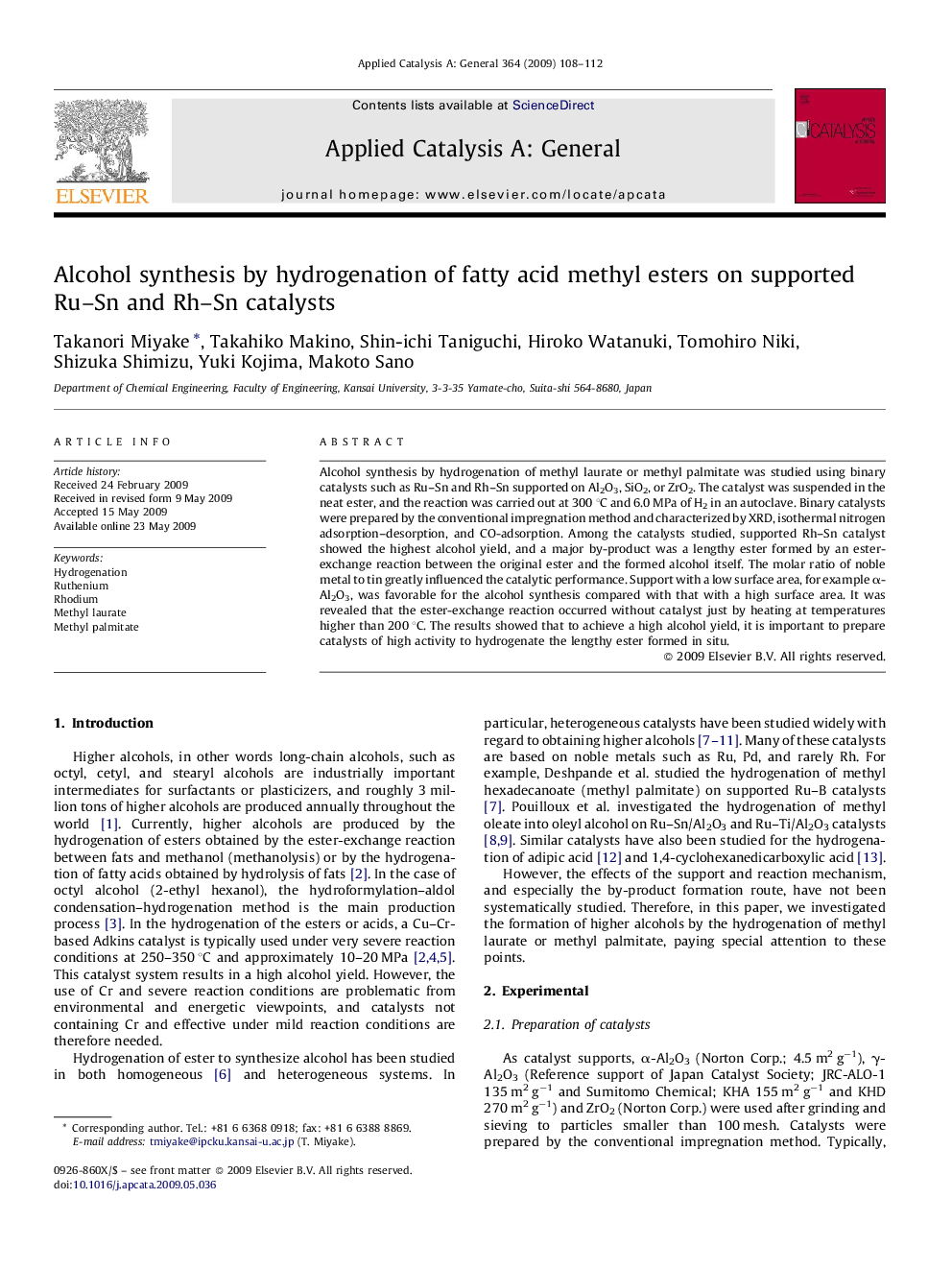| Article ID | Journal | Published Year | Pages | File Type |
|---|---|---|---|---|
| 42869 | Applied Catalysis A: General | 2009 | 5 Pages |
Alcohol synthesis by hydrogenation of methyl laurate or methyl palmitate was studied using binary catalysts such as Ru–Sn and Rh–Sn supported on Al2O3, SiO2, or ZrO2. The catalyst was suspended in the neat ester, and the reaction was carried out at 300 °C and 6.0 MPa of H2 in an autoclave. Binary catalysts were prepared by the conventional impregnation method and characterized by XRD, isothermal nitrogen adsorption–desorption, and CO-adsorption. Among the catalysts studied, supported Rh–Sn catalyst showed the highest alcohol yield, and a major by-product was a lengthy ester formed by an ester-exchange reaction between the original ester and the formed alcohol itself. The molar ratio of noble metal to tin greatly influenced the catalytic performance. Support with a low surface area, for example α-Al2O3, was favorable for the alcohol synthesis compared with that with a high surface area. It was revealed that the ester-exchange reaction occurred without catalyst just by heating at temperatures higher than 200 °C. The results showed that to achieve a high alcohol yield, it is important to prepare catalysts of high activity to hydrogenate the lengthy ester formed in situ.
Graphical abstractAlcohol synthesis by hydrogenation of methyl laurate or methyl palmitate was studied on binary catalysts such as Ru–Sn and Rh–Sn supported on Al2O3, SiO2, or ZrO2 at 300 °C and 6.0 MPa of H2 in an autoclave. Choice of support influenced significantly on the selectivity of the intended alcohol; namely, porous supports afforded more by-product formed by non-catalytic ester-exchange reaction between the intended alcohol and the raw ester.Figure optionsDownload full-size imageDownload as PowerPoint slide
